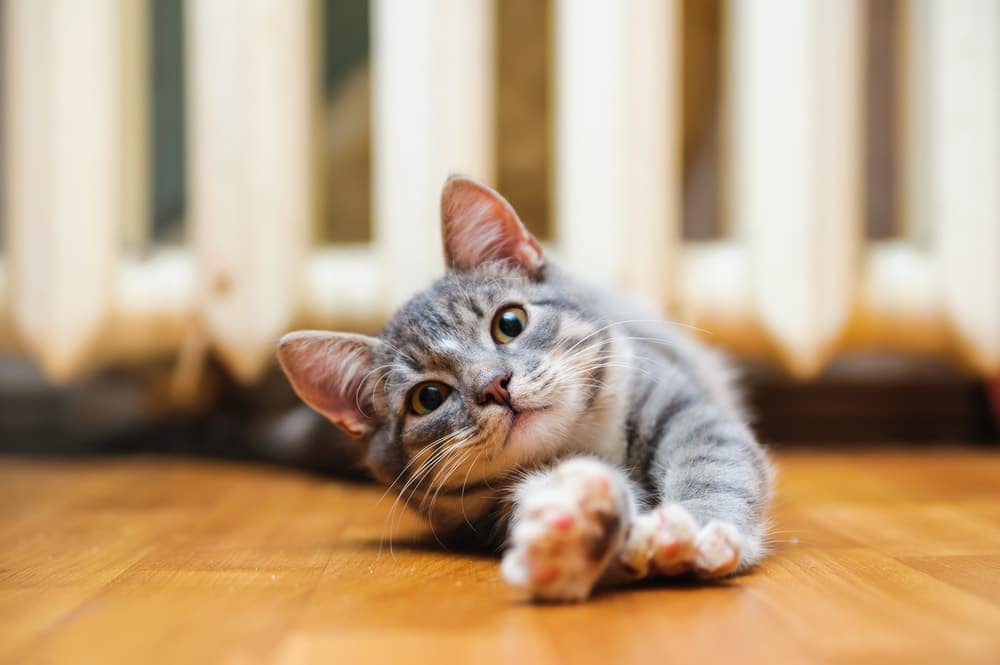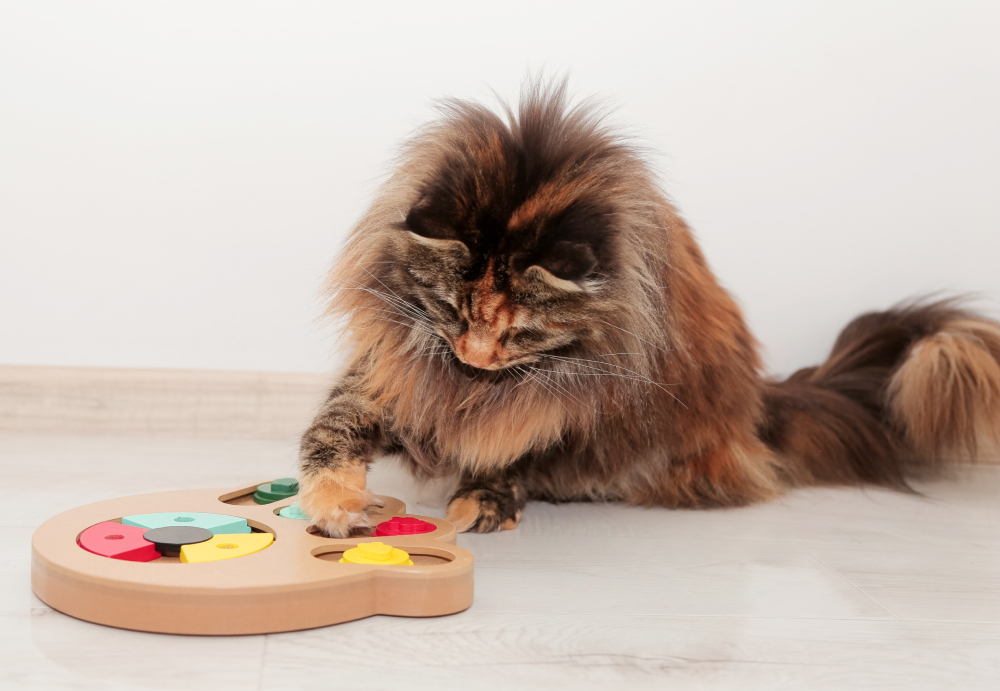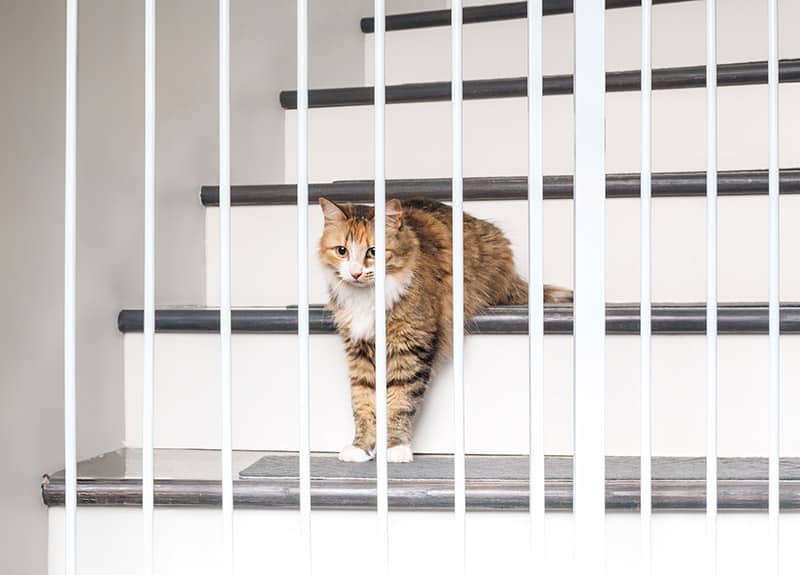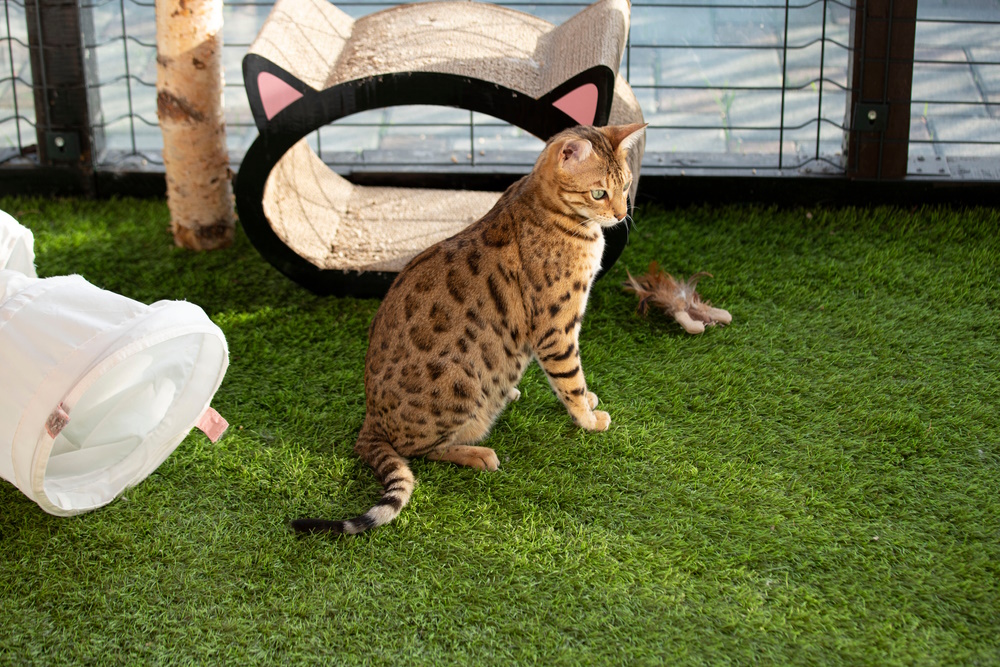Click to Skip Ahead
Cats can be creative regarding the activities they enjoy, and their human companions don’t appreciate some of them. Cats sometimes scratch furniture to the point of destruction, jump on counters, and launch sneak attacks, which can lead pet parents to wonder how to stop these sorts of behaviors, and if there are effective ways to discipline cats.
Although it’s possible to convince cats to change their ways with training, training through discipline and punishment are no longer recommended. Please keep reading for a few tips on how to get cats to adjust their behavior.
Before Getting Started
Cats haven’t been domesticated for very long, and many of the instincts that served them so well in the wild are still coursing through their veins. The activities that pet parents find problematic frequently involve deeply seeded needs that many cats feel compelled to meet.
Scratching is instinctive, and almost all kitties love to hang out in high places. It’s also normal for them to nibble on things and launch sneak attacks from hiding spots.

What Doesn’t Work
Discipline or punishment to motivate behavior changes doesn’t work with cats. Cats don’t understand why they’re being punished, and it often causes them to become fearful and aggressive.
Cats react badly to most aversive methods, such as squirting them with water and yelling at them. Harmonious relations between all living creatures are typically built on love, gentleness, cooperation, and kindness. Aversive methods don’t provide cats with information about what to do, making it difficult for them to adjust their behavior.
Ways to Motivate Behavioral Change
Showing your cat how you want them to behave is a great way to get them to adjust their ways. Next, we’ll discuss a few training tips to help your cat reduce their undesirable behavior.
1. Provide Appropriate Alternatives

The first step is ensuring your cat has appropriate ways to engage in instinctive activities such as scratching, climbing, and playing. Providing scratching posts and toys can keep them from destroying your belongings.
Simply trying to stop them from scratching furniture, counter surfing, and jumping out from behind things without providing them with appropriate alternatives won’t work because cats fundamentally need to scratch, climb, and play.
2. Make Appropriate Options More Attractive
It’s vital to make the appropriate alternatives more interesting and fun. Having several scratching posts around your house can convince your cat to gravitate away from sofas and expensive furniture.
Spritzing cat trees with catnip or silvervine can make them far more enticing places to hang out than boring old counters. However, playing with your cat every day is also important. Regular play sessions give cats fun, human-approved ways to let their hunting instincts unfurl.
3. Show Them What to Do

Cats sometimes need guidance when it comes to learning new behaviors.
After introducing your cat to new scratching posts and perches, it’s important to consistently redirect their attention to the new options when they decide it’s time for a scratch or climb so they can learn how to handle their needs in the future.
4. Reward Good Behavior
Cats (like most living creatures) appreciate the experiences that they enjoy and make them feel good. Pet parents can reinforce wanted behavior by catching their companions in the act when they’re using scratching posts and rewarding them for the activities with praise and treats.
5. Encourage Them to Go Elsewhere

Making the areas where cats like to engage in problem behaviors less attractive can encourage them to move on. Cats who like to scratch specific pieces of furniture can be encouraged to make different choices by putting sticky tape around their favorite targets.
Deterrents placed on counters can make perching there far less enjoyable for them than hanging out in cat trees in front of windows with great views. Blocking cats’ access to areas from which they like to launch sneak attacks can sometimes minimize the behavior.
Environmental Enrichment
If your cat has access to activities to keep them busy, they’re less likely to get into mischief.
Leashed Walks and Training
Walking your cat on a leash allows them to enjoy the great outdoors and provides mental stimulation, exercise, and time with their favorite humans! Cats can be trained to come when called and play games like fetch.
They generally learn best with short training sessions and positive techniques that involve plenty of rewards. Clicker training works well with cats since it makes it easy for them to determine which action they’re being asked to complete.
Taking your cat for a walk may sound challenging, but the right harness and leash can make all the difference! We recommend Hepper's Cat Harness & Leash Set because it combines important safety features with stylish and comfortable design elements.
From the highly adjustable, machine-washable velvet harness to the sturdy nylon climbing rope leash, this set has everything you'll need to start adventuring. At Catster, we’ve admired Hepper for many years and decided to take a controlling ownership interest so that we could benefit from the outstanding designs of this cool cat company!
Window Perches and Catios

Window perches and catios allow cats to observe the activities of local birds and butterflies. Cat trees and shelves give them high places to hang out that don’t involve counters.
Catios are ideal for apartment-dwelling cats and keep them safe while allowing them to enjoy fresh air. Backyard and window enclosures can give indoor cats safe outdoor access.
Scratchers, Trees, and Shelves
You can purchase rope, cardboard, and carpet scratchers, which are available in vertical and horizontal designs. Cat trees and shelves can provide high places to hang out and the fun of climbing to get there. Many cat trees include scratchers as well as toys and napping spots.
Food Puzzles and Interactive Games
Food puzzles and interactive games engage cats’ problem-solving abilities. They give cats fun and appropriate ways to use their physical and mental abilities.
Toys and Playtime
Most cats love to play, and simple balls and plush toys are great choices that allow cats to have fun when they’re on their own. There are also interactive games that respond when cats bat at and chase them, which can really boost the fun factor.
Regularly playing with your cat is fantastic for their physical and mental health. Although some cats are happy to play alone, it’s vital to spend time with your cat every day to improve your bond.
Our Favorite Catnip Toy Great cat toys are crucial to keeping your cat happy and healthy. We love Hepper's Catnip Stick Toy because it's handmade in the USA, available in a cool range of colors, and sturdy enough to withstand your cat's sharp claws. Best of all, you won't find any filler here – just 100% organic catnip!
At Catster, we’ve admired Hepper for many years and decided to take a controlling ownership interest so that we could benefit from the outstanding designs of this cool cat company!
Conclusion
When it comes to getting cats to change their ways, discipline and punishment aren’t effective. Training methods that involve punishing a cat for its behavior will stress them out and make the problems worse. Behaviors like scratching furniture, counter surfing, and pouncing are normal, and the goal isn’t to get them to stop engaging in them but to convince them to do so in ways and in places that work for everyone.
Providing appropriate alternatives and making them interesting, along with consistently rewarding desired behaviors, can work wonders in creating environments in which cats and their humans are happy.
Featured Image Credit: Magui RF, Shutterstock














